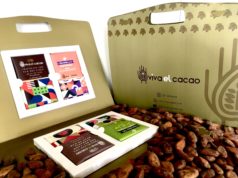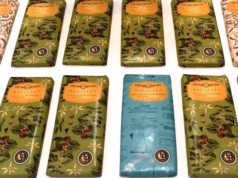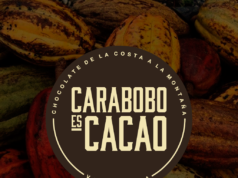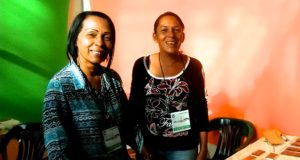By Juan Pablo Crespo
Photos: Courtesy of Paco Terreblanca
His culinary creation is at once an art to behold as well as the most sublime of pleasures; in short, the embrace of science with passion, and as more ephemeral the experience on the palate could be, it will always leave an ineffaceable trace on our sensory memory. The Spanish pastry chef Paco Torreblanca has cooked a career spanning more than 40 years that today allows him to emerge beyond flavours and bear on his résumé the cake and desserts of Princes of Asturias’ royal weeding and also the best book of desserts in the world.
Torreblanca is recognised as one of the most renowned pastry chefs in the world over the past three decades. The creative work of his hands is born in his heart and it is updated exerting an acknowledged global influence in the new generations.

Through his Escuela Torreblanca (International School of Pastry Arts) there have passed great pastry chefs and chocolatiers as Miguel Sierra, Josep Maria Rodriguez and Sergi Vela. Thus, when this alicantino tells Vivaelcacao.com that he is “a passionate lover of Venezuelan cacao” and defines it as “one of the best in the world,” the least we, Venezuelans, could do is fall in love and stand up for our nobler fruit.
Our cocoa is, according to Torreblanca, the great benchmark for a part of his chocolate and pastry productions since “it provides scents and nuances difficult to obtain from other cocoas”. Great words!

Royal Dessert
After being awarded as the Best Pastry Chef of Europe (1990) and the Best Pastry Dessert Restaurants in Spain (2004) his fame skyrocketed when, in past years, Prince Philip (current king of Spain) called him personally to ask him to take charge of desserts for his wedding banquet with Letizia. – Such a great responsibility, he tells us- “It marked a turning point” in his career.
Much earlier in the turbulent 1960s, when he was only 12 years old while playing in the streets and stood out in school for good grades, his father decided to send him to Paris to study with Jean Millet, one of the best French confectioners at that time and Meilleur Ouvrier de France, one of the top titles that this country grants to the most qualified professionals in each speciality.
In those years, young people from modest families did not have much leeway to decide what to do as adults. His father had met Millet while fighting in the Civil War, as a Republican, with the International Brigades.
“During the 14 years of my stay in Paris I learned all the basics and discipline of patisserie as well as the accuracy for a quality work “ Torreblanca tells us about those nearly fifteen years that linked his destiny to gastronomy.
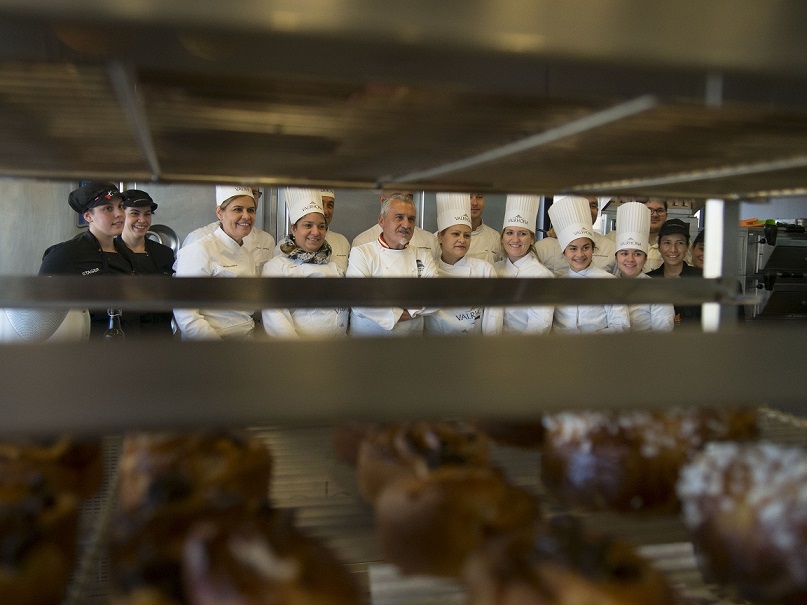
Natural inspiration
Nowadays, our interviewee finds part of his inspiration in nature, the same nature he has discovered in his visits to Latin America. “I have brought leaves from its forests to replicate them in chocolate. My visits to the Amazon have been some of my most important sources of inspiration. “
Torreblanca believes that chocolate is the indisputable king of patisserie as if it were the enthroned lion in its jungle. “Chocolate is the king of patisserie, it allows us to create from magnificent artistic pieces to great desserts, cakes, pastries, ice cream … with so many nuances and different flavours. It is something unique” … As unique are his chocolates made from Venezuelan cocoa.
The master pastry chef is a passionate of patisserie “with my head in the stars and feet on earth,” at least what you can read on his Facebook account. It is also a lover of sports, music, reading and an active gastronomic speaker.
– At the age of 12 his father sent him to Paris to learn confectionery under Jean Millet’s guidance, although at that age an average boy wants to play football, cycling and hanging out with the kids in the neighbourhood … How did you take that at that age? What did that change of environment mean to you?
– I think my father’s decision was correct. At that age you almost never foresee anything for your future. For a while I missed many things, and then I got used to it.
– You were studying in Paris for more than 10 years. How did the City of Light mark you?
– During the 14 years of my stay in Paris I learned all the basics and discipline on confectionery as well as the accuracy of a quality work. Jean Millet gave me everything, the kind of professional I am today is thanks to him and to this city.

The time has come…
On the kings of Spain’s wedding day Paco Torreblanca got a standing ovation from the guests. Among those presents there was a royal long list, as Prince Charles of England, Prince Albert of Monaco and Princess Rania of Jordan
– And after passing a lot of water under the bridge, Prince Philip called him personally to ask him to be in charge of the desserts of his wedding banquet with Letizia; so, the “Gianduja Real” was born. What has this experience meant to you both professionally and personally?
– It was a great pleasure to be called from the Royal House for preparing the desserts for Princes of Spain’s weeding. It marked a turning point at grassroots and professional level. It was something extraordinary.
– Apart from the royal wedding, which of your desserts do you feel more identified with, either by its ingredients or the story behind this?
– To me, one of my best creations was the saffron chocolate cake and steamed apples. Still, after many years, when I see it in any store or elsewhere in the world, I feel a great satisfaction.
– You won the award for best book of desserts in Spain (2009) and were prized for the best book of desserts in the world (2003). What should a good book from this profile have to make a difference and outperform many existing ones?
– I have been very lucky to get two of my books prized as best books of patisserie in the world and in Spain. The big difference, I think, it is the reliability of their recipes, their extraordinary photography and also that it is a book that serves as a working tool for professionals.
– Torreblanca has acted as a consultant to restaurants and hotels in different parts of the planet. What are the most common mistakes made in these sectors?
– For a long time, restaurants did not pay attention to desserts. Today this has changed and the great restaurants dedicate them to make good desserts. Unfortunately, we still seem to be the younger siblings of kitchens. Due to this lack of attention, good pastry chefs are well demanded today, but there are not too many.
– Men, women, children … There is a boom for the kitchen in the world that has overtaken the media. What would be the positive aspect that all this culinary experience leaves us?
– All this television boom has helped us gain a better understanding of our profession and to praise it more, as well as to have more appreciation.

A peerless sweet
The king of patisserie has a name: chocolate. Our interviewee creates from this sweet element, pieces of art in different presentations which captivate even the most exigent palates.
– Is chocolate the king of patisserie? Why?
– Without any hesitation chocolate is the king of patisserie, it allows us to create from artistic pieces to great desserts, cakes, pastries, ice cream … with so many nuances and different flavours. It is something unique.
– What is the current trend of chocolate in the world? Are there any differences by regions?
– Every day we have better and different varieties of the finest chocolates. Cocoa from many parts of the world allows us to have unique and exceptional chocolates.
– Dou you belong to those who think that chocolate is a weapon of seduction?
– No doubt it is a weapon of seduction. With chocolate we can have people get passionate.
– I have read that nature is part of your inspiration. In this sense, have you found inspiration in the colours, landscapes, rhythms and flavours of Latin America?
– Yes, many of my trips to Latin America have always enriched me in many ways. For instance, I have brought leaves from the forests to replicate them in chocolate. My visits to the Amazon have been one of my most important sources of inspiration.
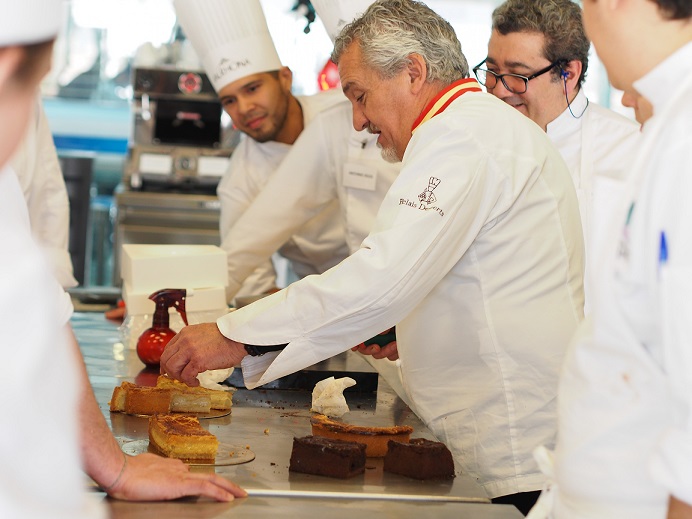
His preference for Venezuelan cacao
As passionate of gastronomy is Torreblanca as he is of Venezuelan cacao, whose nuances are “secret” ingredients that only the land of Bolivar knows how to produce.
– We understand that you know that Venezuelan cacao is considered the best in the world. Tell us, what is your opinion about this seed that grows in this part of the planet?
– I am a great lover of Venezuelan cocoa, its scent and its touch of acidity as well as its unique nuances that make it the best in the world, without a doubt.
– Let’s talk about the patisserie that you have developed with Venezuelan cocoa…
– Much of my work, like chocolates and especially in patisserie. It is the great reference in many of my creations, it provides me aromas and nuances difficult to achieve with other cocoas.
– What feelings did Venezuelan cocoa rekindle in you … flavours, aromas, texture…?
– Always aroma and scent, depending on its roasting and harvest. I found it something unique.
Paco Torreblanca is a professional chef whose authority on patisserie praises Venezuelan cacao to the skies, the one that deserves to grow in quantity as well as preserve their original qualities to flood world markets.
